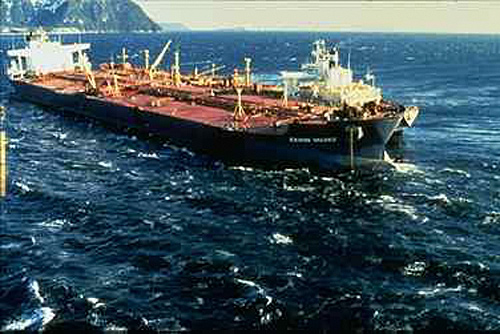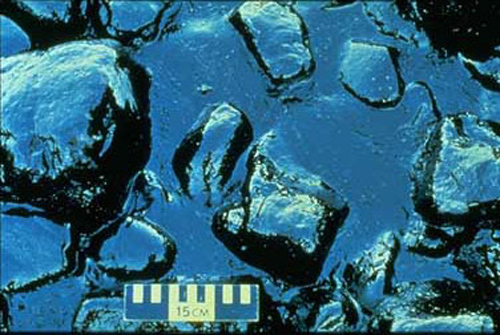Seagrass is disappearing from the world’s oceans at an accelerating rate
A new study finds that 29 percent of the world’s known seagrass has disappeared since 1879 and the losses were rising exponentially.
Seagrasses—a unique group of flowering plants that have adapted to exist fully submersed in the sea—profoundly influence the physical, chemical, and biological environments in coastal waters, acting as ecological engineers (sensuWright and Jones 2006) and providing numerous important ecological services to the marine environment (Costanza et al. 1997). Seagrasses alter water flow, nutrient cycling, and food web structure (Hemminga and Duarte 2000). They are an important food source for megaherbivores such as green sea turtles, dugongs, and manatees, and provide critical habitat for many animals, including commercially and recreationally important fishery species.—A Global Crisis for Seagrass Ecosystems

Examples of seagrass meadows and associated animals. (a) Seahorse (Hippocampus sp.) in temperate Cymodocea nodosa meadow,Mediterranean Sea. Photograph: Gérard Pergent. (b) School of zebrafish (Girella zebra) over a temperate Posidonia australis meadow, Western Australia. Photograph: Gary A. Kendrick. (c) Manatee (Trichechus manatus) feeding in a tropical Thalassia testudinum meadow, Puerto Rico. Photograph: James Reid. (d) Green sea turtle (Chelonia midas) feeding in a tropical T. testudinum meadow, Yucatán. Photograph: Robert P. van Dam. Source: A Global Crisis for Seagrass Ecosystems
Seagrasses, which are found in coastal waters are vanishing at the rate of about 110 sq km a year since 1980, Reuters reported the study as saying. The report is to be published in the U.S. journal Proceedings of the National Academy of Sciences.
Seagrasses as ecological service providers and biological sentinels Seagrass meadows have important ecological roles in coastal ecosystems and provide high-value ecosystem services compared with other marine and terrestrial habitats (figure below; Costanza et al. 1997). For example, primary production from seagrasses and their associated macro- and microepiphytes rivals or exceeds that of many cultivated terrestrial ecosystems (Duarte and Chiscano 1999). Seagrasses also provide an enormous source of carbon to the detrital pool, some of which is exported to the deep sea, where it provides a critical supply of organic matter in an extremely food-limited environment (Suchanek et al. 1985).Much of the excess organic carbon produced is buried within seagrass sediments, which are hotspots for carbon sequestration in the biosphere (Duarte et al. 2005). The structural components of seagrass leaves, rhizomes, and roots modify currents and waves, trapping and storing both sediments and nutrients, and effectively filter nutrient inputs to the coastal ocean (Hemminga and Duarte 2000).—A Global Crisis for Seagrass Ecosystems
Only about 177,000 sq km of seagrasses are left globally.
The study by Australian and American scientists compares the losses to that of coral reefs, tropical rainforests and mangroves. It says seagrass meadows are “among the most threatened ecosystems on earth,” blaming the loss on population growth, development, climate change and ecological degradation of the oceans.
“Seagrasses are sentinels of change” and the loss of seagrass was an indicator of a deteriorating global marine ecosystem. “Mounting seagrass loss reveals a major global environmental crisis in coastal ecosystems,” the report said.
Moreover, seagrasses can be considered as biological sentinels, or “coastal canaries.” Changes in seagrass distribution, such as a reduction in the maximum depth limit (Abal and Dennison 1996) or widespread seagrass loss (Cambridge and McComb 1984), signal important losses of ecosystem services that seagrasses provide. Seagrasses are sessile, essentially integrating the relevant water quality attributes, such as chlorophyll and turbidity, that affect the light reaching their leaves. Several features of seagrasses and seagrass meadows result in their particular importance in this regard.The widespread distribution of seagrasses throughout tropical and temperate regions (figure 2) allows better assessment of larger-scale trends than do other comparable coastal habitats, such as mangrove, corals, or salt marsh plants, which are limited to only one of these broad geographic regions. Seagrasses also live in shallow, protected coastal waters, directly in the path of watershed nutrient and sediment inputs, and are therefore highly susceptible to these inputs (figure 4), unlike mangrove forests (which are largely unaffected by water quality) or coral reefs (which occur farther away from the imputs).—A Global Crisis for Seagrass Ecosystems
Some 70 percent of all marine life in the ocean directly depends on seagrass, U.S.-based Seagrass Recovery said.
“Seagrass losses decrease primary production, carbon sequestration and nutrient cycling in the coastal zone. If the current rate of seagrass loss is sustained or continues to accelerate, the ecological losses will also increase, causing even greater ill-afforded economic losses,” said the study.
In addition to the well-documented causes of seagrass declines, other threats to these species are emerging. Over the last 20 years, introductions of nonnative marine species have arisen as a major environmental challenge for the world’s oceans (Carlton 1989). Such introductions are accelerating worldwide (Ruiz et al. 2000), a trend that will continue as the pathways for introductions widen and proliferate and as intervention lags (figure 6b; Naylor et al. 2001, Levine and D’Antonio 2003, Padilla and Williams 2004). At least 28 nonnative species have become established in seagrass beds worldwide, of which 64% have documented or inferred negative effects (figure 6b). The concern about this emerging threat to seagrass beds is that, whereas it is possible to reverse eutrophication or cease dredge-and-fill activities, it is virtually impossible to remove a nonnative species after establishment and spread (Lodge et al. 2006). Lastly, the rapid expansion of fish farming and other aquaculture practices (e.g., shellfish culture) can have serious consequences on local populations of seagrasses through physical disturbance or increased deposition of organic matter and nutrients (Marbà et al. 2006).—A Global Crisis for Seagrass Ecosystems
The preservation of seagrasses and their associated ecosystem services—in particular, biodiversity, primary and secondary production, nursery habitat, and nutrient and sediment sequestration—should be a global priority.We believe that the crisis facing seagrass ecosystems can be averted with a global conservation effort, and this effort will benefit not just seagrasses and their associated organisms but also the entirety of coastal ecosystems. —A Global Crisis for Seagrass Ecosystems
Related Links:














 Do the eco-terrorists get a warm sensation rushing through their body knowing they are alive and can spot the dad rare sunfish, but the dead fish can’t see them?
Do the eco-terrorists get a warm sensation rushing through their body knowing they are alive and can spot the dad rare sunfish, but the dead fish can’t see them?






















